Inspirational kitchen creations push the boundaries of tradition
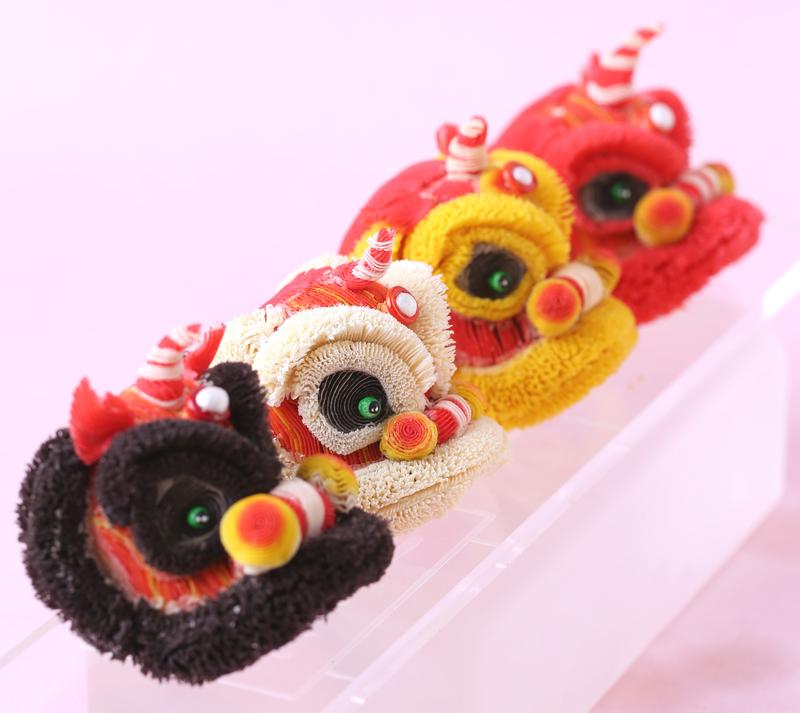 Puff pastries, shaped like lion heads, are inspired by the Chinese folk art of lion dancing. (PHOTO PROVIDED TO CHINA DAILY)
Puff pastries, shaped like lion heads, are inspired by the Chinese folk art of lion dancing. (PHOTO PROVIDED TO CHINA DAILY)
With a fluffy mane, large gleaming eyes and two layers of eyelashes, a palm-sized piece of puff pastry shaped like a lion's head has attracted millions of "likes" on the Douyin short-video platform.
Tens of thousands of netizens have been toiling in kitchens in attempts to replicate the item.
Wu Yang, 35, a pastry chef from Shenyang, capital of Liaoning province, who created the piece and has observed numerous failed efforts to reproduce it, is sharing detailed steps with his followers on how to make such an item. He gives instructions on perfecting the dough and performing specific cuts to the pastry.
Wu has devoted himself to traditional Chinese puff pastry and dough sculptures for more than a decade. With his skillful hands and boundless imagination, he has created a wide range of pastry items.
 Pastry in the shape of lotus roots created by master chef Wang Zhiqiang. (PHOTO PROVIDED TO CHINA DAILY)
Pastry in the shape of lotus roots created by master chef Wang Zhiqiang. (PHOTO PROVIDED TO CHINA DAILY)
He gained inspiration for creating the lion's head from the traditional Chinese folk art of lion dancing while watching the Wong Fei-hung film series, which began in 1991 and was centered on a martial artist who lived in Guangdong province.
"Traditional Chinese culture is my inspiration for making Chinese puff pastry. In the future, I hope more young people will understand the culture behind this form of pastry," Wu said.
I want young people to try around 20 snacks without feeling full, and also to learn about the stories behind each snack.
Wang Zhiqiang, 74, master chef known as the “king of pastry”
While using traditional cooking methods and authentic flavors, Chinese pastry chefs of all ages are becoming innovative in developing new combinations of traditional Chinese culture and the modern world to attract young people.
Chinese puff pastry typically requires making a simple modeling dessert. In creating the lion's head, Wu turned the pastry into a three-dimensional sculpture.
He made each small part of the head separately with water dough, before sticking the parts together with egg white. For the mane, he made 160 cuts to the dough to produce the fluffy effect after deep frying.
"It took several attempts to finally create the lion's head. At first, the two layers of eyelashes were the same size, but I later made the second layer smaller and thinner to make it stand out," Wu said.
The lion's head creation is the result of Wu's accumulated pastry-making skills over the past 10 years.
He used to be responsible for making congee at a restaurant, for which he was required to cut ginger and carrots precisely — an experience that helped him master a range of knife skills.
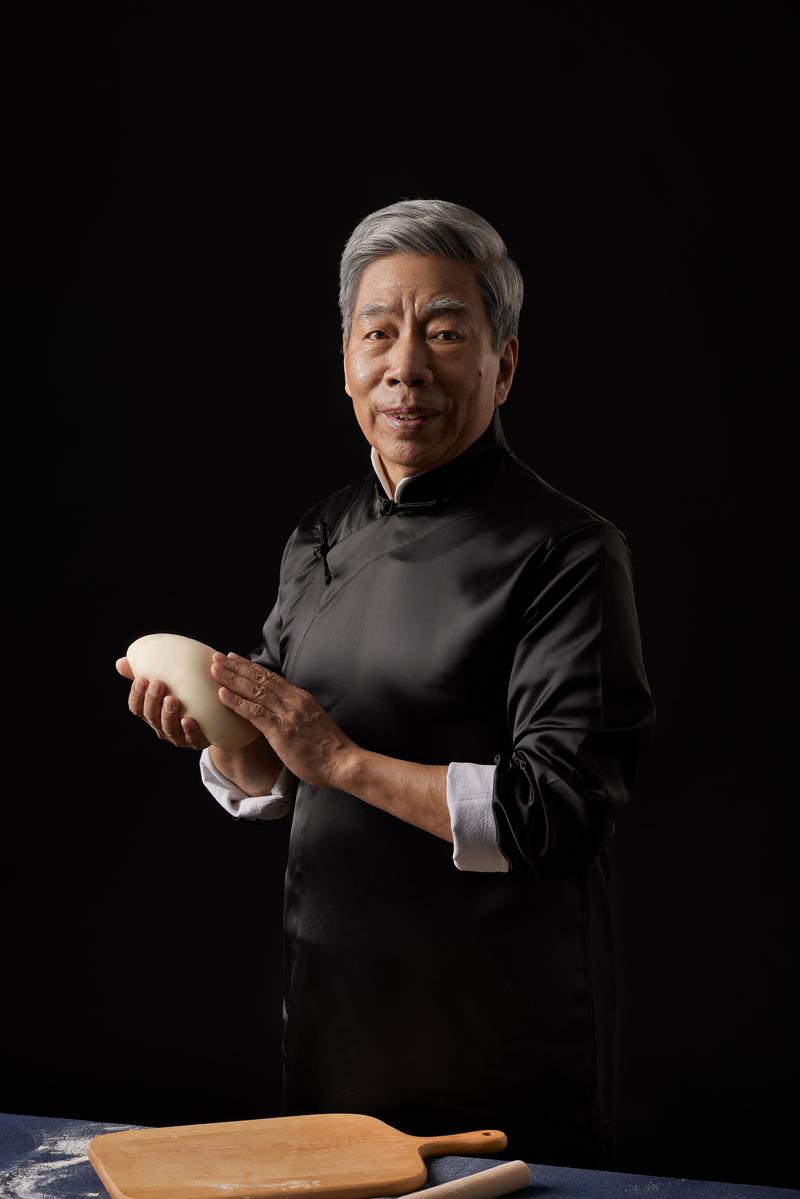 Wang Zhiqiang, 74, master chef known as the “king of pastry”. (PHOTO PROVIDED TO CHINA DAILY)
Wang Zhiqiang, 74, master chef known as the “king of pastry”. (PHOTO PROVIDED TO CHINA DAILY)
A decade ago, he developed a passion for dough sculptures. This work requires many skills, such as kneading, rolling, cutting, carving, and shaping with a small bamboo knife, all of which take long hours of practice. Wu studied these skills by self-learning.
Lacking a basic training in art, he initially found it difficult to accurately gauge a dough sculpture's proportions and features.
His solution was to observe people, and he still frequently looks hard at those around him, observing their body proportions. Over time, the pastry items Wu makes have become increasingly lifelike and evocative.
Ten years ago, he opened a studio to teach the art of making puff pastry. In addition to teaching, he found time to create new products. "Like a singer releasing a new song each year, I plan to launch a new puff pastry product each year," he said.
After creating abalone and flower puff pastry, he came up with the lion's head in 2021, which quickly became a hit on social media.
Pastry lovers nationwide have learned to make such pieces from Wu, who has taught more than 1,000 students. He likes to share his techniques and thoughts about puff pastry, and is happy to see students presenting his creations in competitions and at gala dinners.
"I used to focus on the techniques, but now I think more about ways to combine traditional Chinese culture with puff pastry," Wu said, adding that it is good to see more young people becoming interested in Chinese pastry.
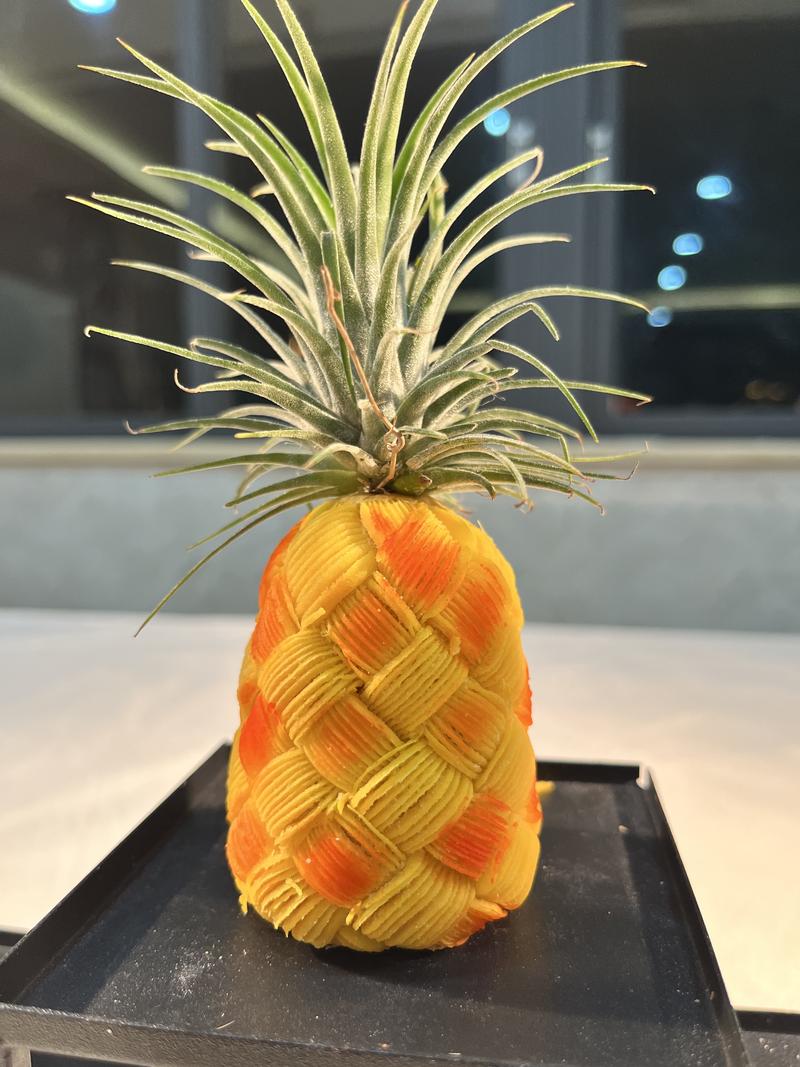 Pastry resembling a pineapple made by Chen Xiaodong. (PHOTO PROVIDED TO CHINA DAILY)
Pastry resembling a pineapple made by Chen Xiaodong. (PHOTO PROVIDED TO CHINA DAILY)
Young inheritor
One of Wu's students, Chen Xiaodong, 23, from Shunde, Guangdong province, grew up in a lion dancing culture.
Chen, who has studied Chinese pastry since 2018, wants to make an item such as the lion's head, but he doesn't know how to master this art. "It's difficult. If you make a tiny mistake in any of the steps, you will fail," he said.
Just like myself four years ago, my students are looking forward to becoming pastry chefs.
Chen Xiaodong, 23, pastry chef and teacher from Shunde, Guangdong province
"I learned from social media that Wu Yang had made puff pastry shaped like a lion's head, and I was thrilled to be one of those attempting to create new pastry works that combine Chinese culture."
Chen contacted Wu to learn the secrets of making such a piece. "Even though we've never met, when we discuss the skills of making puff pastry, we talk for ages," Chen said.
To perfect his lion's head, Chen visited a local lion dance inheritor to learn about this culture. According to Chen, his own version of the lion looks rather fierce, while Wu's rendering is cute.
"Wu and I are thinking about making a lion that opens its mouth wider. The angle at which the lion's head is placed into the oil needs adjusting to give it the shape we want after it is deep fried," Chen said.
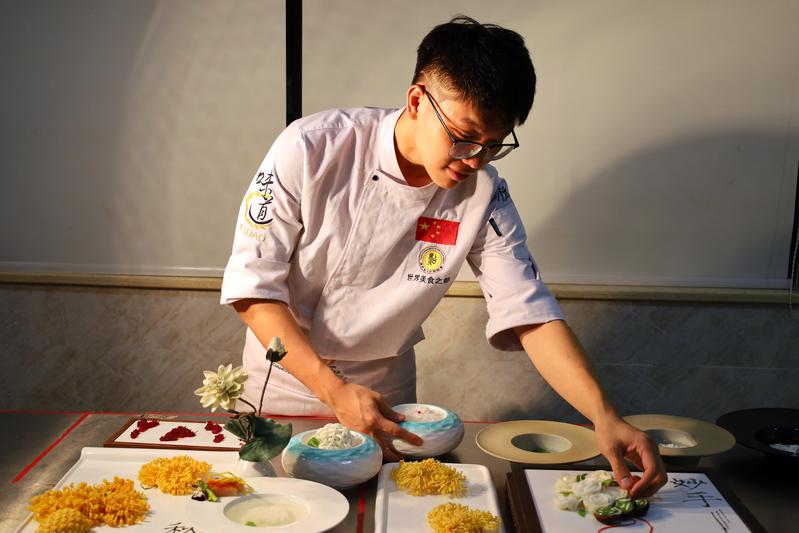 Chen Xiaodong, 23, pastry chef and teacher from Shunde, Guangdong province. (PHOTO PROVIDED TO CHINA DAILY)
Chen Xiaodong, 23, pastry chef and teacher from Shunde, Guangdong province. (PHOTO PROVIDED TO CHINA DAILY)
After studying Chinese pastry at Shunde Polytechnic in Foshan, Guangdong, from 2018 to 2020, Chen continued to learn this traditional skill at the Shunde campus of Hanshan Normal University. He graduated from the university last year.
To pay his tuition fees, he did three part-time jobs each day — selling steamed buns and porridge in the morning, egg puffs in the afternoon, and barbecue food at night.
At university, Chen improved his cooking skills and took part in numerous cookery competitions. "I want to present my pastry works and ideas," he said.
Although still young, he has already taught the art of making Chinese pastry.
"Just like myself four years ago, my students are looking forward to becoming pastry chefs," he said.
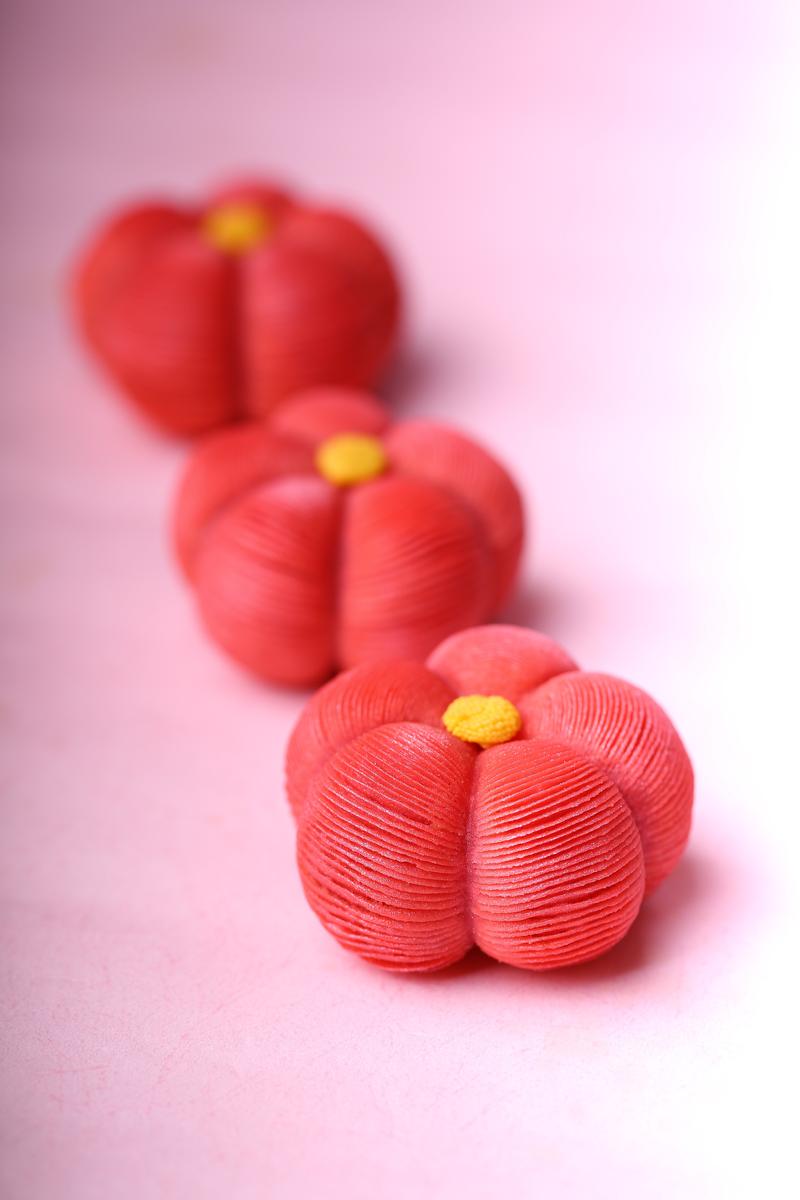 Pastry shaped like plum blossom created by Wu Yang. (PHOTO PROVIDED TO CHINA DAILY)
Pastry shaped like plum blossom created by Wu Yang. (PHOTO PROVIDED TO CHINA DAILY)
Lifetime's passion
Dubbed the "king of pastry", Wang Zhiqiang, 74, became a pastry chef assigned to Chinese state banquets when he was in his 20s. Now, he is constantly creating new products.
In 1971, Wang was tasked with making pastry for a state banquet marking an international table tennis competition. Designing a cake in the shape of a table tennis paddle, he used a Chinese yam to make the ball.
I used to focus on the techniques, but now I think more about ways to combine traditional Chinese culture with puff pastry.
Wu Yang, 35, chef devoted to traditional puff pastry and dough sculptures
A year later, during then-US president Richard Nixon's visit to China, Wang designed a dish for a state banquet that resembled a panda playing with bamboo.
Over the next two decades, he created and perfected mianguo, or flour-based fruits, with his apprentices. He also spent 10 years finding the ideal solution to creating the colors he insists on using as natural ingredients.
"We lost count of how many times we tried to simulate the colors. Sometimes we'd find a good color, but when we steamed it, the color faded," Wang said.
When cooking mianguo, he chooses to steam, instead of deep-frying or baking the pastries, as steaming is a traditional Chinese cooking method and a healthier alternative.
After five decades, Wang continues to push the boundaries in making traditional Chinese pastry.
"You have to rack your brain to create, and sometimes when you think of good ideas, you have to get up in the middle of the night and draw them directly in a notebook," he said.
Wang and his apprentices recently created dried nuts by filling a red, wooden Sudoku board with nine different types of nut, including peanuts, hazelnuts and pistachios, which had one thing in common in addition to their tempting appearance — they are all made with flour.
For the dried nuts, Wang used puff pastry to create the outer casing, and placed the nuts inside.
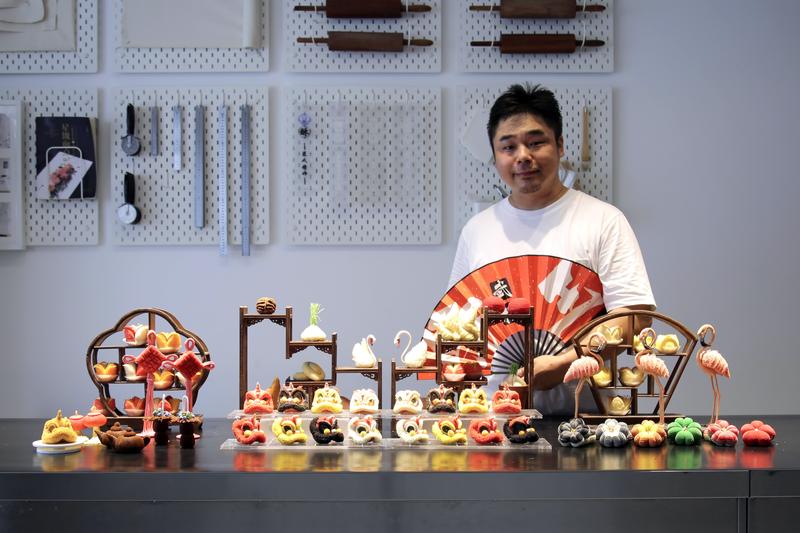 Wu Yang, 35, chef devoted to traditional puff pastry and dough sculptures. (PHOTO PROVIDED TO CHINA DAILY)
Wu Yang, 35, chef devoted to traditional puff pastry and dough sculptures. (PHOTO PROVIDED TO CHINA DAILY)
He believes that pastry innovation should reflect the times, the development of society, seasonal changes, and diversity of ingredients.
He emphasizes the three points that must be followed for innovative work: items should be handmade; the work has to be unique; and it should be performed with precision and care.
"In China, pastry is used to celebrate traditional festivals, including dumplings for Spring Festival, mooncakes for the Mid-Autumn Festival, and zongzi sticky rice dumplings for the Dragon Boat Festival," Wang said.
He thinks the first skill that aspiring Chinese pastry chefs need to master is learning to make five wrappers — for dumplings, steamed stuffed buns, shaomai dumplings, wontons and spring rolls. "The shaomai wrap should have pleats like a ballet skirt," he said.
According to Wang, in addition to wrappers, potential pastry chefs must be able to make different types of dough, as well as sweet and savory fillings.
"I'm not against mechanized production, but we must inherit craftsmanship, and also be innovative to attract young customers. Decades ago, people ate pastry to fill their stomachs, but nowadays young customers want to try something delicate," Wang said.
He is planning to make small, cute versions of traditional Beijing snacks such as sweet pea cake and red bean cake, which can be put together by using a method similar to creating a mortise-and-tenon joint in woodwork. Wang also wants to make sesame deep-fried noodles in a small butterfly shape, and traditional flour tea.
"I want young people to try around 20 snacks without feeling full, and also to learn about the stories behind each snack," he said.


